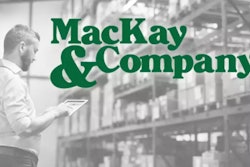One of a dealership's largest investments is its parts inventory. And dealers, like everyone else, want their investment to provide returns. Proper stewardship of a parts inventory investment should lead to returns measured in at least three ways:
The KEA benchmarks for these three metrics respectively are:
Gross turn rate measures how many times you cycle through the value of your inventory each year. Increasing gross turns means you get a return on the same investment more frequently, which increases your total annual return.
Fill rate measures how often you can meet the customer’s demand the first time they need a part. Any time the customer has to wait for you to order the part, you risk losing the current or future sales from that customer.
Obsolete inventory is any part number on hand with no sales in the last 12 months. The KEA benchmark is less than 2 percent obsolete inventory.
Achieving these metrics leads to having the right part, in the right quantity, at the right time when your customer needs it. KEA refers to this as “right-sizing” the inventory. Having the proper parts inventory is a key tenant of having a profitable parts department.
Put up guardrails to ensure only parts and quantities that meet current demand is ordered into your inventory. KEA refers to these as stock criteria. Each DMS has settings that can be customized for each vendor/source/stock class, that once completed, will suggest proper ordering levels and timing.









